Want gas? Don’t worry, we have 70 year of consumption ahead! Actually this statement is as misleading as it is for oil : as for oil, on historical times we can consider that gas comes from a stock that has been formed once and for all, and therefore it will obey the same mathematics than oil. Its production started at zero, will go through a maximum, and then will decline, and this conclusion is valid for any given country or province.
However, as gas production is more recent than oil production, one might expect that there are less places that have already passed their peaks, and it is well the case. Actually Europe concentrates most of the countries that are obviously post-peak. In other regions, there are some countries for which the question arises, but there is no clear answer at this stage.
Europe
In Europe, all countries but one – Norway – are post-peak.
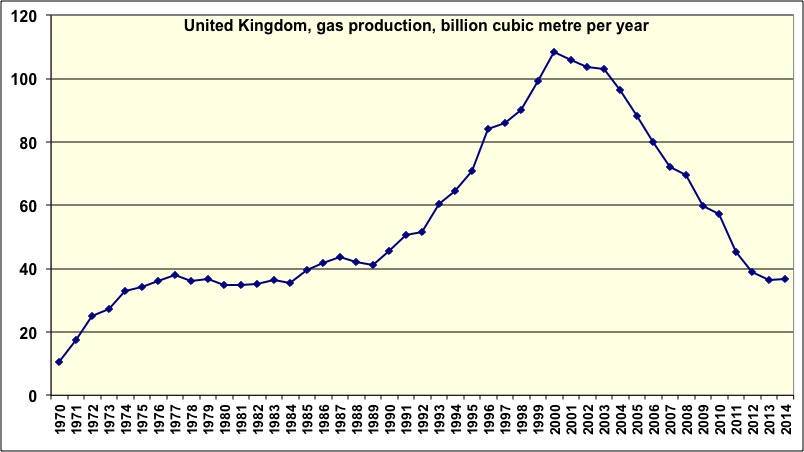
Gas production of United Kingdom.
Peak in 2000.
Source : BP Statistical Review, 2015
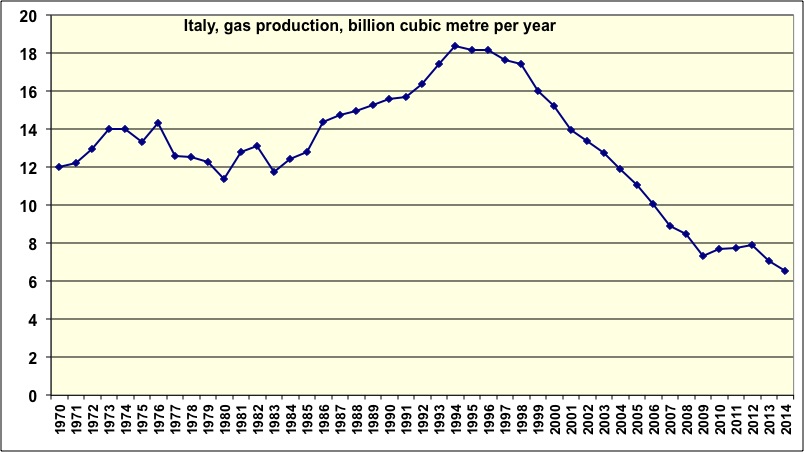
Gas production of Italy.
Peak in 1994.
Source : BP Statistical Review, 2015
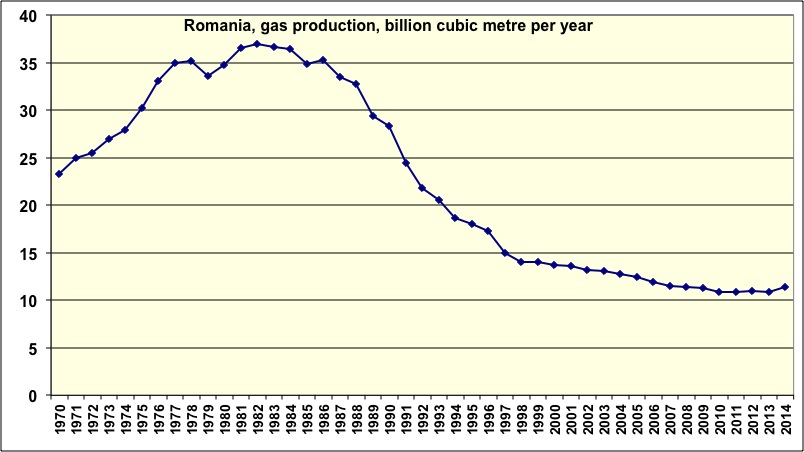
Gas production of Romania.
Peak in 1982.
Source : BP Statistical Review, 2015
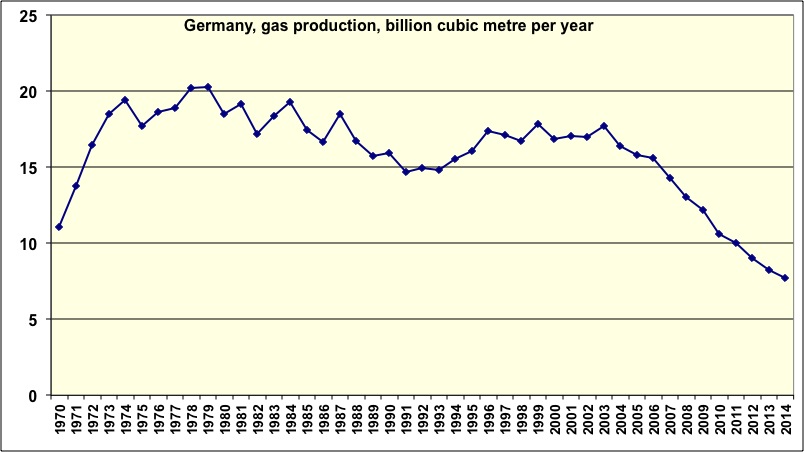
Gas production of Germany.
Peak in 1979.
Source : BP Statistical Review, 2015
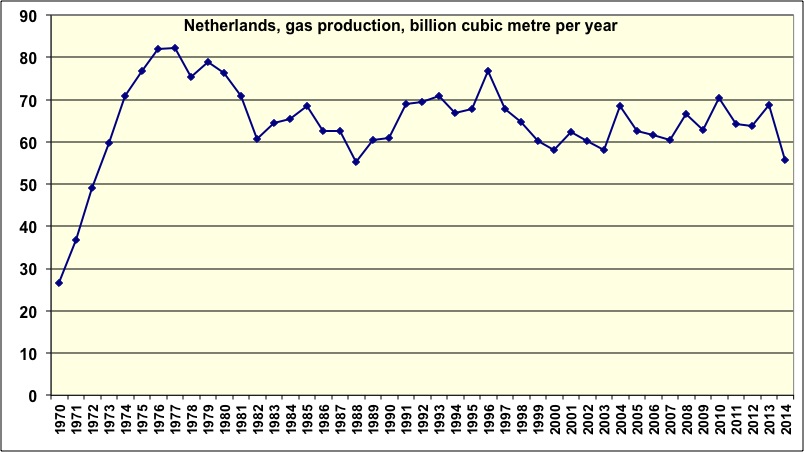
Gas production of Netherlands.
Peak in 1977.
Source : BP Statistical Review, 2015

Gas production of Denmark.
Peak in 2005.
Source : BP Statistical Review, 2015
The global production of Europe is declining rapidly.
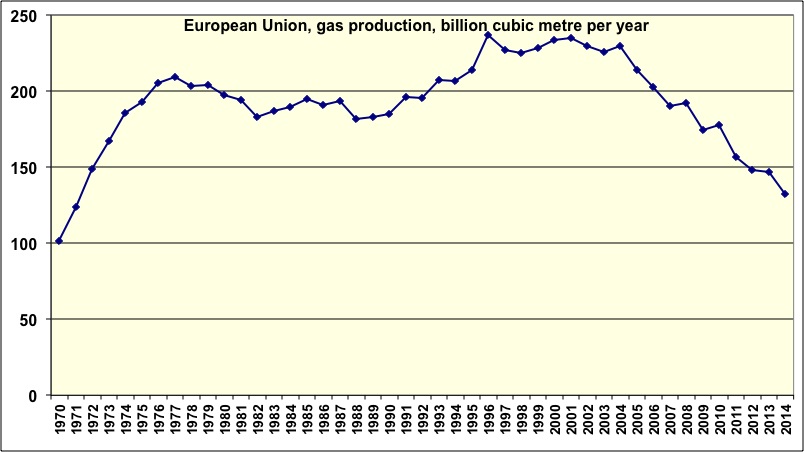
Gas production of the European Union.
Peak in 1996.
Source : BP Statistical Review, 2015
The European Union produces roughly 25% of the gas it consumes, but this percentage rises to 60% when including Norway.
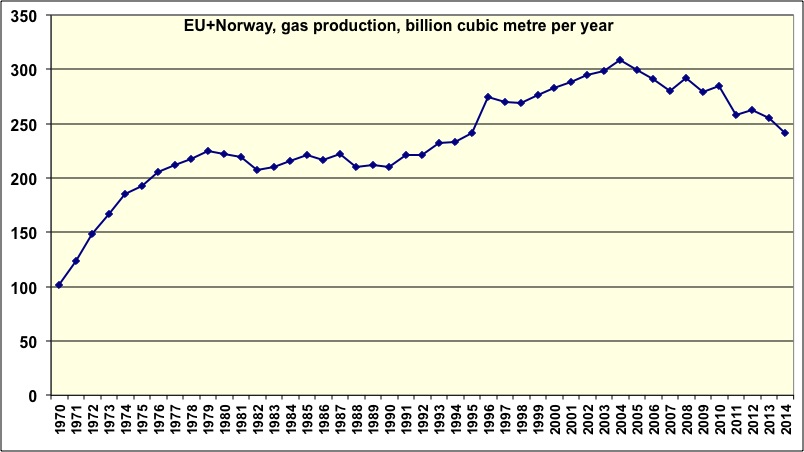
Gas production of The EU and Norway
Peak in 2004.
Source : BP Statistical Review, 2015
Former Soviet Union
Russia, once first and now second world producer, is on a kind of plateau since 1990. Ukraine is post-peak, Turkmenistan might be, but some other countries are rising fast. Globally, the whole zone has been on a kind of plateau for the last 20 years.
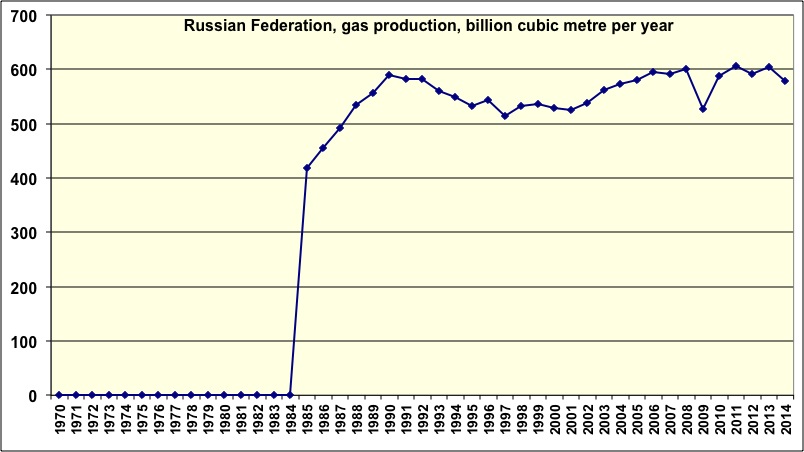
Gas production of the Russian Federation (no data before 1985).
Source: BP Statistical Review, 2015
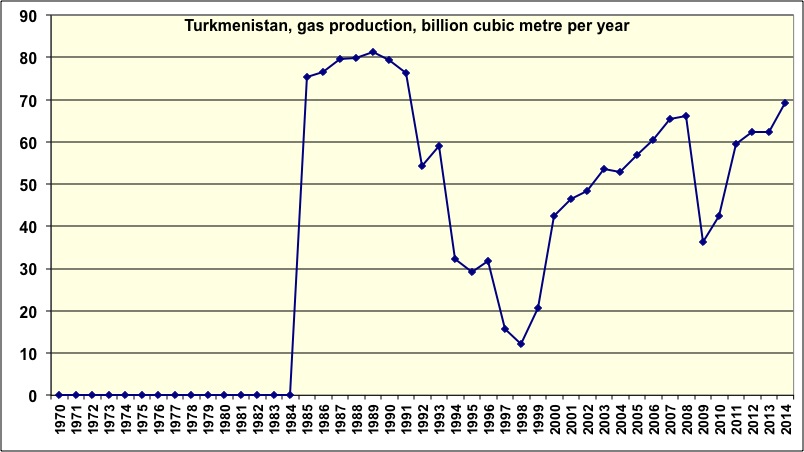
Gas production of Turkmenistan (no data before 1985).
Is the peak behind already?
Source : BP Statistical Review, 2015
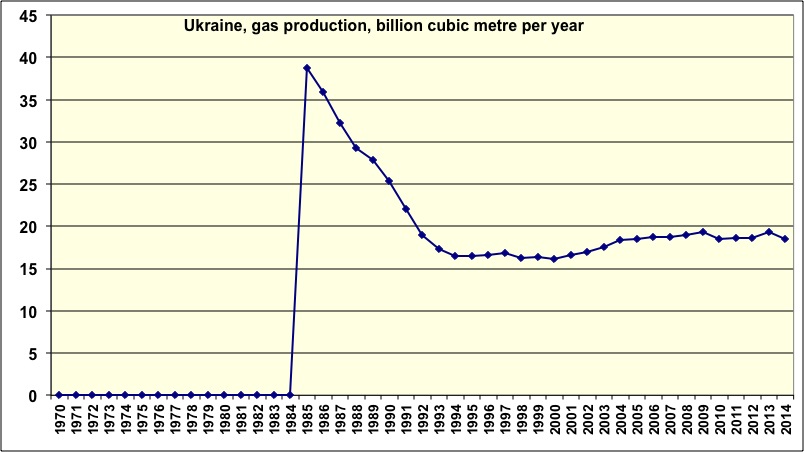
Gas production of Ukraine (no data before 1985).
The peak is definitely behind.
Source : BP Statistical Review, 2015
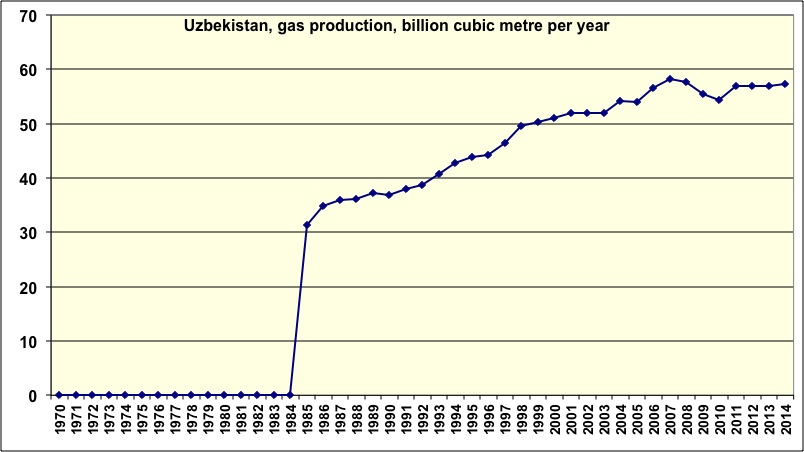
Gas production of Uzbekistan (no data before 1985).
Is the peak behind already?
Source : BP Statistical Review, 2015

Gas production of the former Soviet Union.
With ups and downs, the zone is today roughly producing what it was producing 20 years ago.
Source : BP Statistical Review, 2015
Far East
The main producer of the zone is China, followed by Indonesia and Malaysia. A marginal producer New Zeland) seems post-peak, but several other countries have been on a plateau for a number of years.

Gas production of New Zealand.
Peak in 2001.
Source : BP Statistical Review, 2010
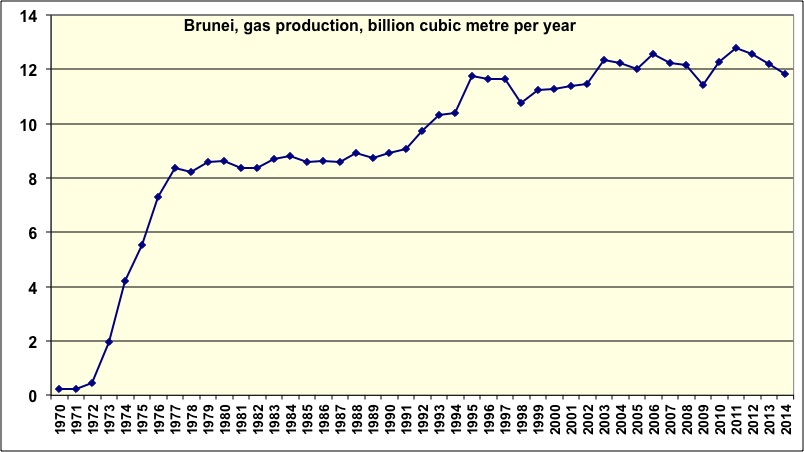
Gas production of Brunei.
Plateau for more than 15 years.
Source : BP Statistical Review, 2015
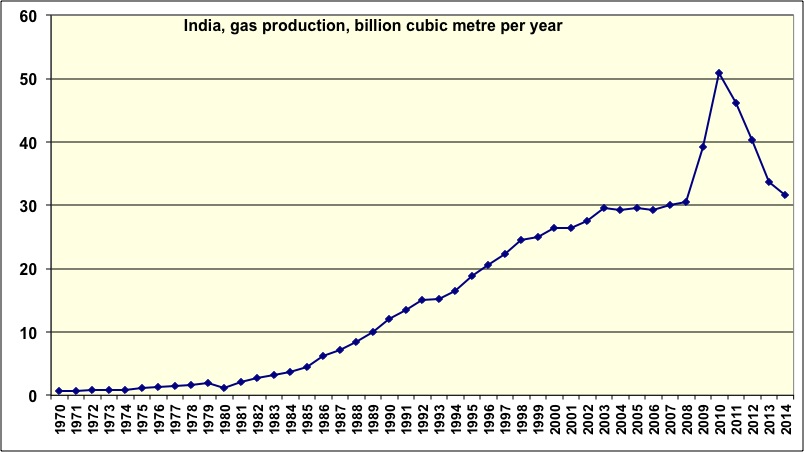
Gas production of India.
????
Source : BP Statistical Review, 2015
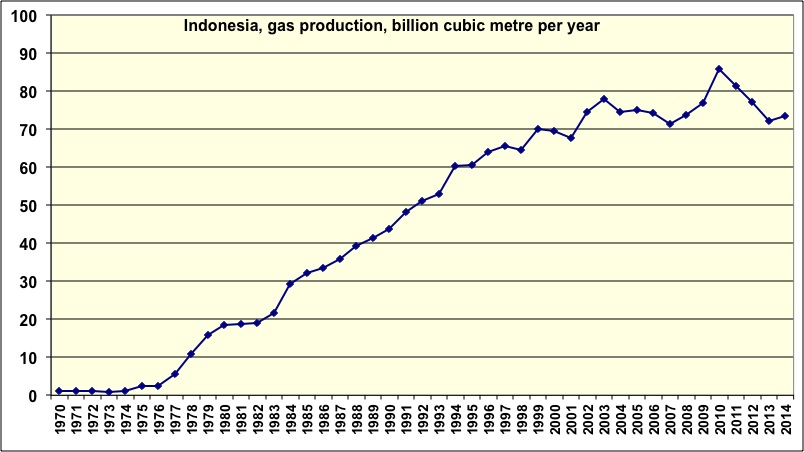
Gas production of Indonesia.
Plateau for more than 10 years.
Source: BP Statistical Review, 2015
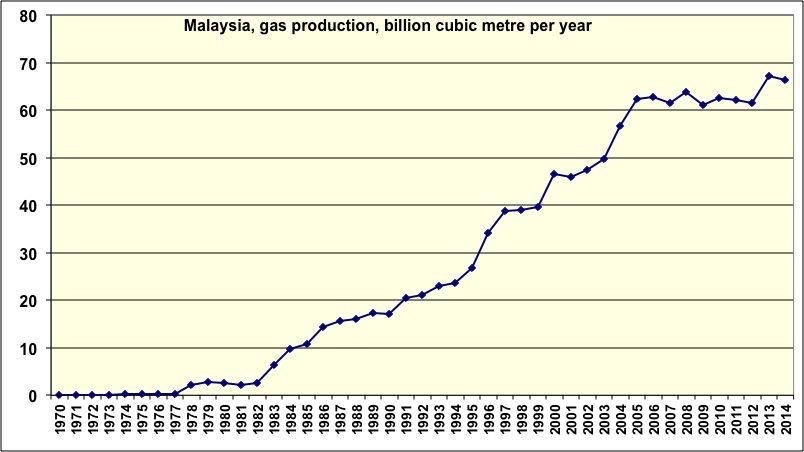
Gas production of Malaysia.
Plateau for more than 5 years.s.
Source: BP Statistical Review, 2015
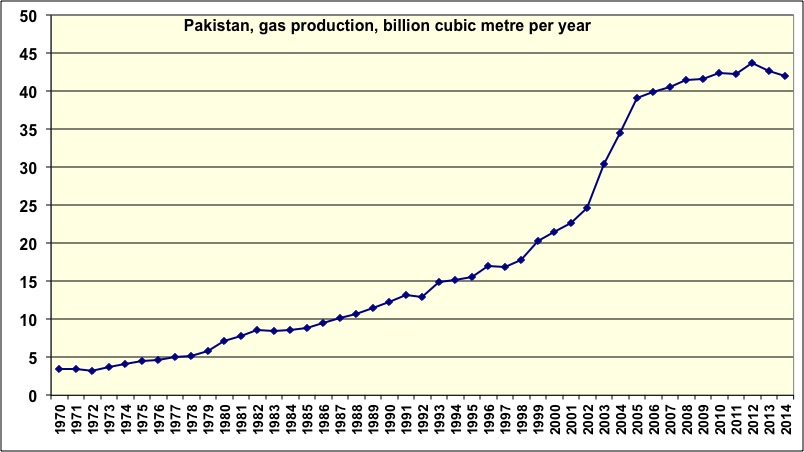
Gas production of Myanmar.
Plateau for more than 5 years.
Source: BP Statistical Review, 2015
Globally the zone was rising fast until two years ago, and it is difficult to draw whichever conclusion from the little halt that took place since 2010.

Gas production of the Far East.
Source : BP Statistical Review, 2015
Middle East
Middle East, the dominant province regarding oil, does not rank the same regarding gas. No major producer seems to be post-peak, even though the case of Irak (0,02% of the world production!) is intriging.
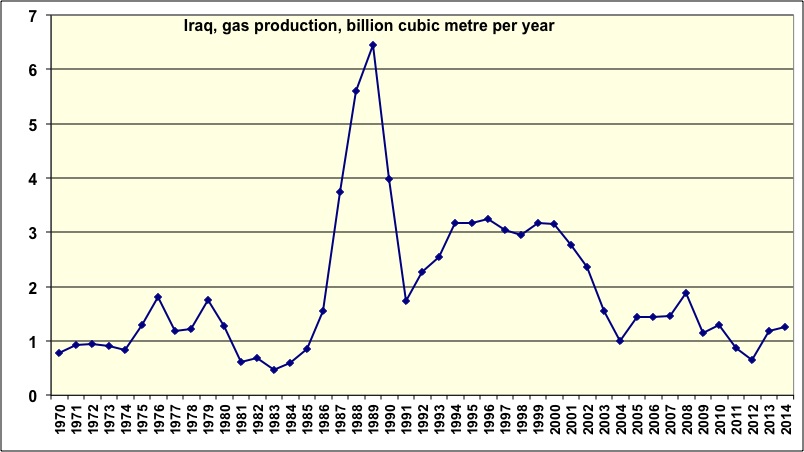
Gas production of Irak.
Peak in 1978?
Source : BP Statistical Review, 2014
The zone is globally rising fast.
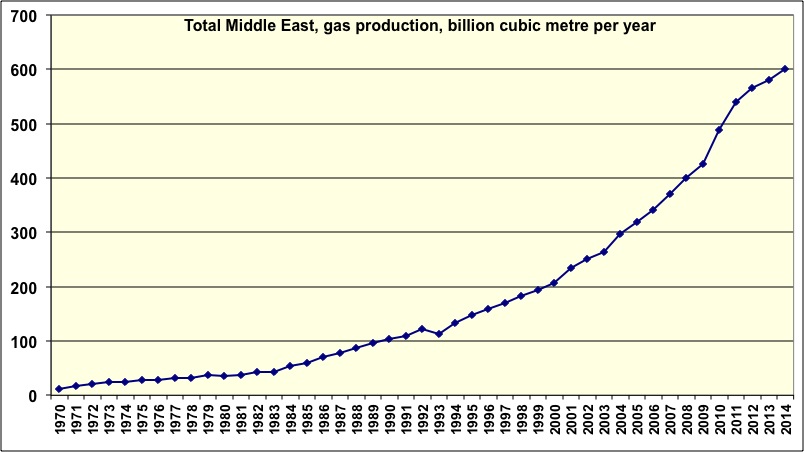
Gas production of Middle East.
Source : BP Statistical Review, 2015
Africa
In this zone, production was rising until recently, but it is too soon to draw a conclusion from the recent plateau.
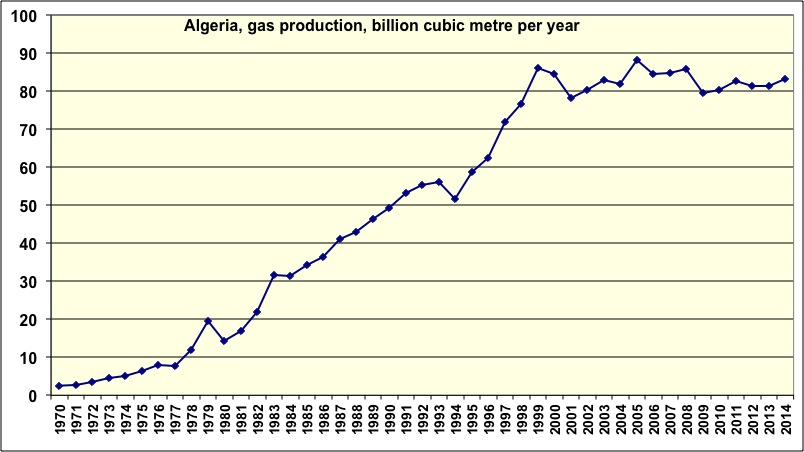
Gas production of Algeria (almost half of the zone).
Plateau for more than 10 years.
Source : BP Statistical Review, 2015
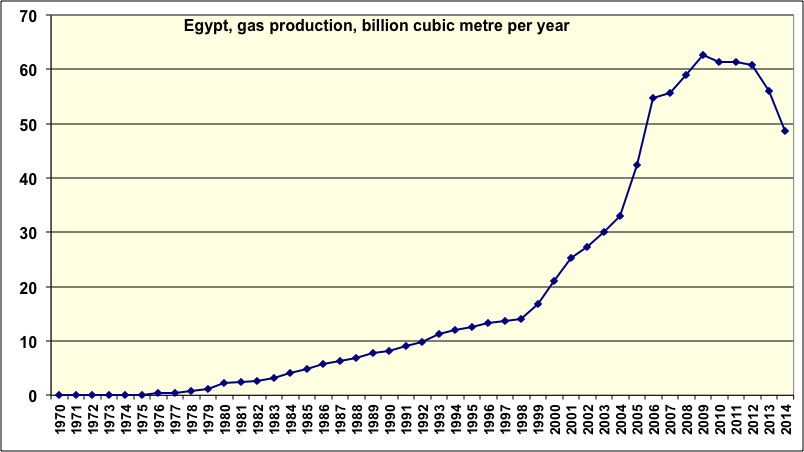
Gas production of Egypt.
Peak in 2009?
Source : BP Statistical Review, 2015

Gas production of Africa.
Plateau for more than 5 years.
Source : BP Statistical Review, 2015
South and Central America
In this zone, some producers are declining or on a plateau, but the zone is globally rising.

Gas production of Argentina.
Peak in 2006?
Source : BP Statistical Review, 2015
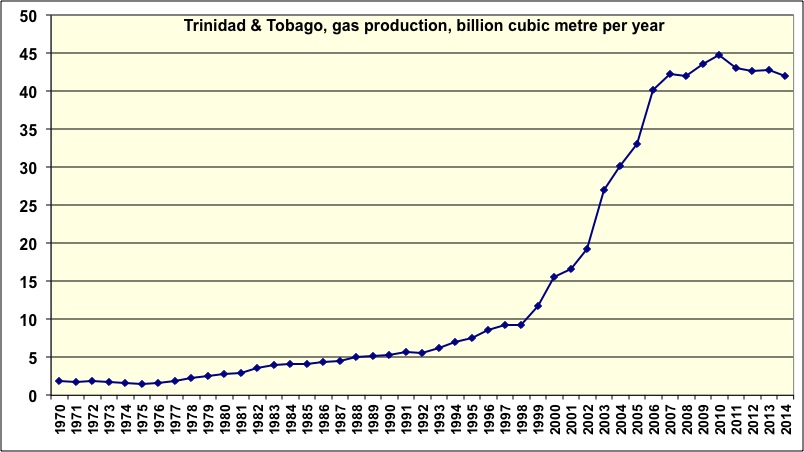
Gas production of Trinidad and Tobago.
Plateau for more than 5 years.
Source : BP Statistical Review, 2015
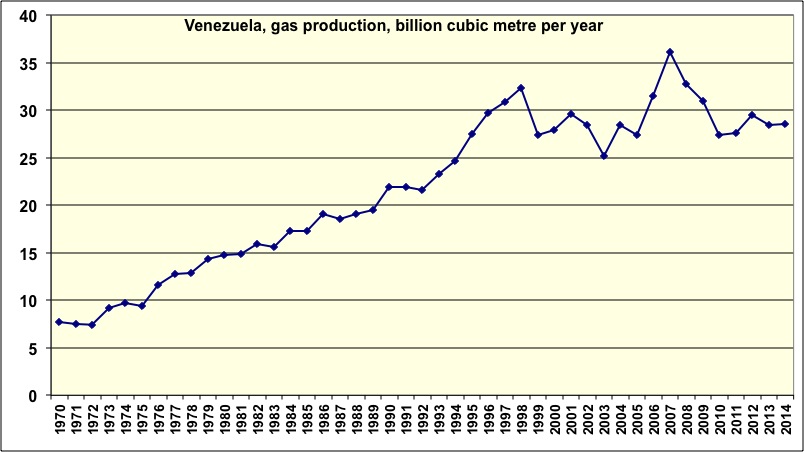
Gas production of Venezuela.
Plateau for 15 years.
Source : BP Statistical Review, 2015
The production of the zone is also rising.
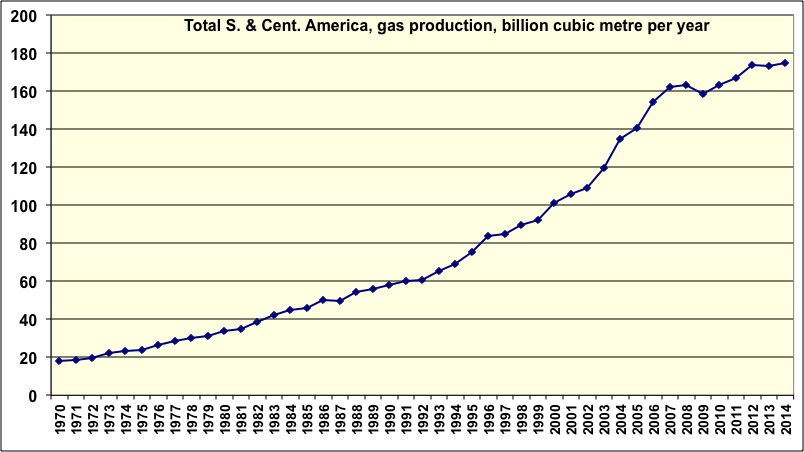
Gas production of South America.
Source : BP Statistical Review, 2015
Northern America
The US – now first producer in front of Russia – had passed its peak on conventional gas along with the peak on conventional oil, but the fast rise of non conventional gas has reverted the decline. Canada is declining and Mexico on a plateau.
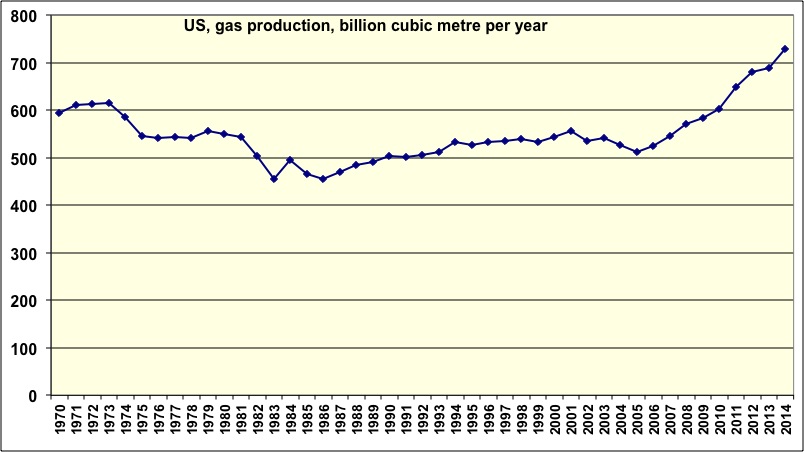
Gas production in the US.
The rise of non conventional begun as late as… in the seventies.
Source : BP Statistical Review, 2015
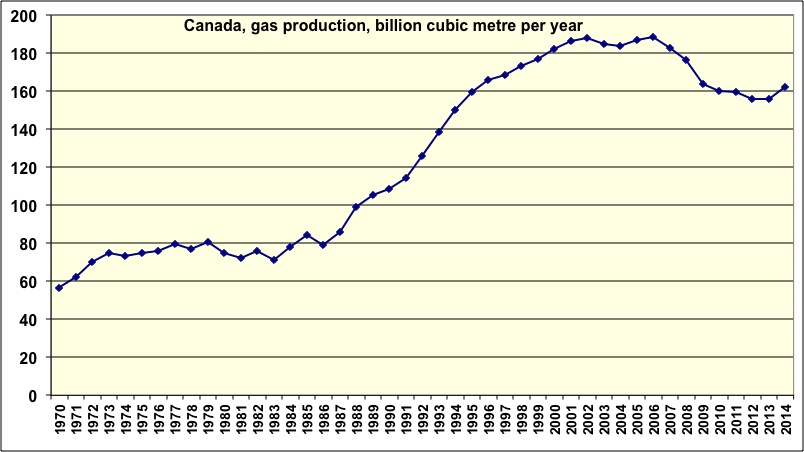
Gas production of Canada.
Peak in 2006?
Source : BP Statistical Review, 2015
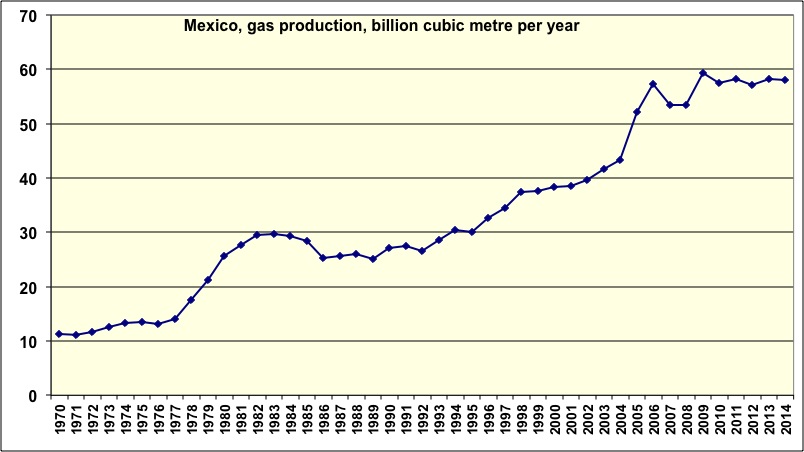
Gas production of Mexico.
Plateau since 2006?
Source : BP Statistical Review, 2015
As the US dominate the regional production – with 3/4 of the total – growth is here too.
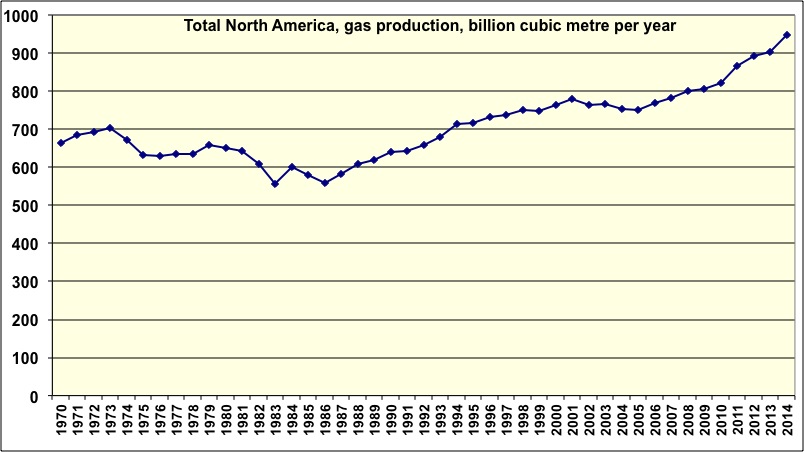
Gas production of North America.
Source : BP Statistical Review, 2015
We see that the only region which is in steep decline is Europe. At the world level, the peak for gas production is expected 10 to 30 years after the maximum for oil production. But there will be such a maximum, it’s certain!